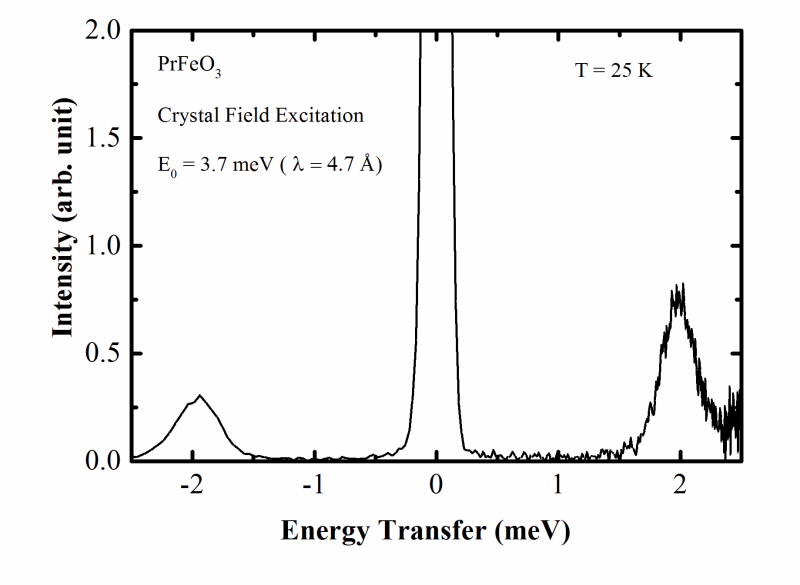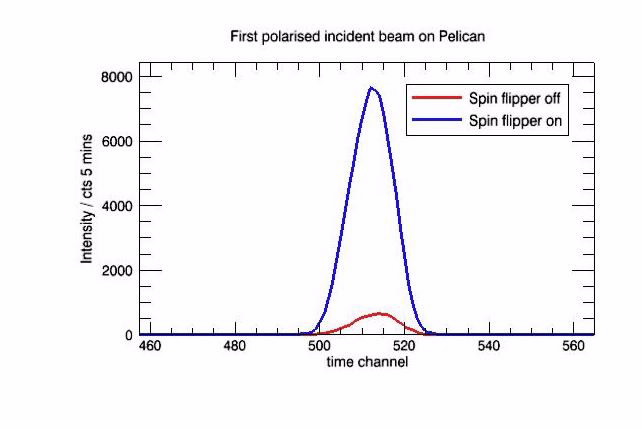Over the last few weeks, as part of its "hot commissioning", our PELICAN cold-neutron time-of-flight spectrometer has taken its first inelastic magnetic scattering spectrum (from the crystal-field excitations in PrFeO3).

An incident energy of 3.7meV was used, with scattering from a powder sample of PrFeO3 at 25K. In the spectrum, the neutron energy loss is to the right, with neutron energy gain to the left. The 2 meV peak shown at both energy loss and gain side corresponds to the transition from the ground state to the first excitation state.
The measurement agrees well with the literature results (Feldmann et al. Phys. Stat. Sol. b 72, 817 (1975)) and serves a good test both of PELICAN and the LAMP data reduction program used to analyse the data.
Furthermore, we have tested our supermirror polariser system, in conjunction with the spin flipper, using the (111) Bragg reflection from CuMn2Al Heusler-alloy crystal, as sample, and an incident energy of 8.4meV. The data give an incident-beam polarisation of ~85%, and we are now working on measures to raise this to the design specification of 95%.
 |
Published: 27/11/2013


